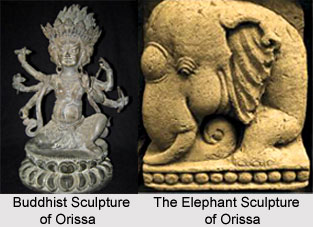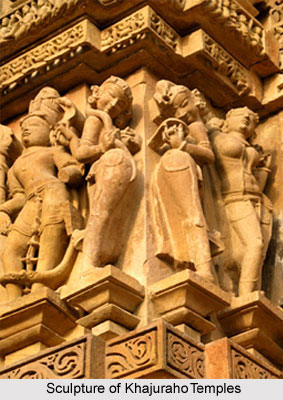 Ramkinkar Baij was the earliest Indian sculptor to experiment with abstract sculptural forms. He was one of the first Indian artists to understand the language of modern Western art and incorporated it in his sculptures. He is regarded as the "Father of Modernism" of Art in India. He was one of the pioneering trios of artists, along with Nandalal Bose and Benode Behari Mukherjee, who made Shantiniketan the most important centre for art in India between the years 1920 and 1947. His path-breaking work in sculpture has been both acknowledged and respected, first in Shantiniketan, then across the country, and internationally as well.
Ramkinkar Baij was the earliest Indian sculptor to experiment with abstract sculptural forms. He was one of the first Indian artists to understand the language of modern Western art and incorporated it in his sculptures. He is regarded as the "Father of Modernism" of Art in India. He was one of the pioneering trios of artists, along with Nandalal Bose and Benode Behari Mukherjee, who made Shantiniketan the most important centre for art in India between the years 1920 and 1947. His path-breaking work in sculpture has been both acknowledged and respected, first in Shantiniketan, then across the country, and internationally as well.
Early Life of Ramkinkar Baij
Ramkinkar Baij was born in Bankura district in1906 in West Bengal. He enrolled himself as a student in Kala Bhavan, Vishwa Bharati University at Shantiniketan in 1925. Trained by two European sculptors and groomed by his mentors, Nandalal Bose and Tagore, the clay modeller turned artist. Later, he headed the Department of Sculpture at the Kala Bhavan.
He started working at a time when traditional art was transitioning to modern art and his work proved to be crucial to history of Indian art. Initially, Ramkinkar Baij used to paint portraits of Indian freedom fighters involved in the Non-Cooperation Movement against the British rulers of India. After obtaining a diploma from the university he went on to head the sculpture department.
Style of Ramkinkar Baij
Ramkinkar Baij was an artist who was single-minded in his pursuit of work but treated the results with philosophic unconcern. He lived an unworldly and capricious life. His works reflect a great zest for nature and deep concern for the conditions of poor people. Ramkinkar Baij took a great interest in human figures, body language and in the general human drama. Modern Western art and pre and post-classical Indian art were his main point of reference. He used local material advantageously and worked combining the skills of a modeller and a carver. His sculptures are filled with force and vitality.
 Works of Ramkinkar Baij
Works of Ramkinkar Baij
The works of Ramkinkar Baij has tremendous energy; joy and reaches out to light. It is earthy and dynamic while showing a growth. His sand and pebble sculptures are noted for a typical, lyrical, metrical sensuality which has an amazing oneness with nature. Indian sculpture was transformed by this artist. He incorporated elements of Santhal tribal art and life into his own work and enhanced them by an understanding of Western expressionism. Although primarily known for his expressionistic sculpture, he was a gifted painter. This sense of rhythm that his sculpture is noted for is manifest brilliantly in his watercolours. Both his sculpture and his paintings are unprompted and bold.
Exhibition of Works of Ramkinkar Baij
Some of the sculptures of Ramkinkar Baij are preserved and displayed at locations including Kala Bhavan, Shantiniketan, National Gallery of Modern Art, New Delhi, Late Rani Chanda Collection and Academy of Fine Arts, Kolkata and in many other art galleries. A retrospective of his works was held at the National Gallery of Art, New Delhi in 1990.
Death of Ramkinkar Baij
Ramkinkar Baij died on August 2, 1980, in Kolkata. He was suffering from disease of the prostate gland and lost all sense of appetite. His body was cremated by his nephew at Shantiniketan. He made his last sculpture "Durga Murti" during his stay at hospital.



















